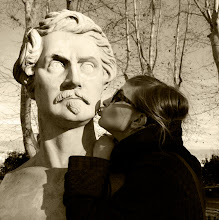
par-a-digm (n): 1. a typical pattern or model, an exemplar. 2. a world view underlying the theory and methodology of a particular scientific subject. 3. a philosophical and theoretical framework of a scientific school or discipline within which theories, laws, and generalization and the experiments performed in support of them are formulated; broadly : a philosophical or theoretical framework of any kind
The Tarot Card Deck is a means of flexibly organizing, and cataloguing a set of sources; each card represents the ideas of an artist, writer, poet, or place that pertain to the dominant themes and schools of thought surrounding the thesis. The deck is based on the framework of a traditional Tarot Card deck and consists of four 'Houses' and one set of 'Major Arcana' (historically these are the 'higher secrets'); these are the House of Ravens, the House of Masks, the House of Pentacles, and the House of Stone, representing the themes of Temporality, the Uncanny, Atmospheres, and Place respectively. The Major Arcana cards are thinkers that represent at least two or more of the dominant themes, and are considered to be 'wild cards' that can fluctuate meaning depending on the lens through which they are examined.
Through this framework, one can group the sources in previously conceived relationships, or discover startlingly new conversations between the various schools of thought that might not have otherwise been seen. A methodology for uncovering these hidden relationships is in the art of storytelling through the cards, in much the same way as was traditionally done. In the writings of Italo Calvino's Castle of Crossed Destinies, stories are unfolded by allowing the Tarot cards to speak for the characters of the book. I propose that three cards drawn at random from the Tarot deck can be strung together in a poem, or story, linking the sources that each one represents. This not meant to be an end in itself, but simply a means of playing with the major paradigms of the thesis work - a catalyst for thought.
The deck will expand and shift focus, congruent with the growth of the thesis work; a hierarchy of ideas will emerge in the mapping of this ever-shifting paradigm landscape. Phase One of the Paradigm Map saw the development of the 'Royalty' of the four Houses, and the first five cards of the Major Arcana set. Phase Two of the project edited the first deck, shifting some of the focus on certain ideas, and produced the cards one through ten of the House of Ravens suit. A comprehensive reading list was also developed in this phase. The back of the card was designed to encompass the four Houses of the Tarot deck - Ravens, Masks, Pentacles, and Stones are all represented in a simplified manner, etched into the card in a geometric pattern.

No comments:
Post a Comment